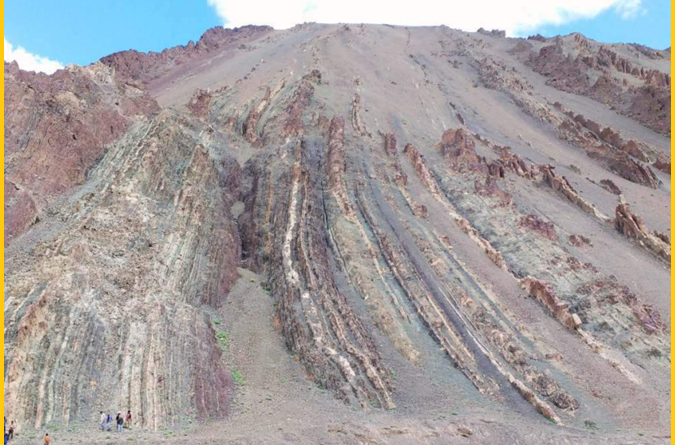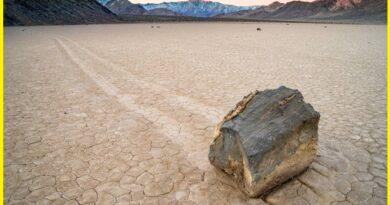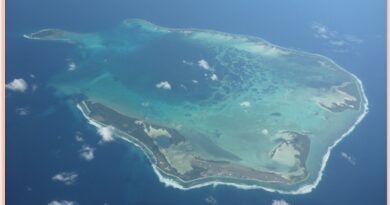Tales of Turbulent- Flysch and Turbidites in the Nindam Formation
Flysch and turbidites of Nindam Formation
Flysch and turbidites of Nidam formation are part of the Nidar Ophiolite Complex that marks the subduction of Neotethys and the consequent collision of India and Asia in the Paleogene age. These Flysch and turbidites are exposed in the Nidar area, Leh, Ladakh. The sequence is made of interbedded volcaniclastic turbidites and shales, with minor pelagic carbonates and a conglomerate package dominated by limestone clasts. These rocks developed in a deep marine environment.
The Nindam Formation is a geological formation found in the Himalayan region of India, is known for its significant deposits of flysch and turbidites, which are important indicators of past tectonic and sedimentary processes.
Nindam Formation
The Nindam Formation in the Himalayan region contains extensive deposits of flysch and turbidites. These sedimentary rocks provide valuable insights into the geological history of the region, including the tectonic processes that have shaped the Himalayas over millions of years. The presence of flysch and turbidites of Nindam Formation suggests that it was deposited in a deep marine basin subjected to tectonic activity, likely related to the collision between the Indian Plate and the Eurasian Plate.
Flysch
Flysch is a type of sedimentary rock sequence characterized by repetitive layers of fine-grained sediments such as shale, sandstone, and siltstone. It typically forms in deep marine environments along continental margins. Flysch deposits often indicate the presence of tectonic activity, such as the subduction of oceanic plates beneath continental plates, leading to the accumulation of sediments in foreland basins.
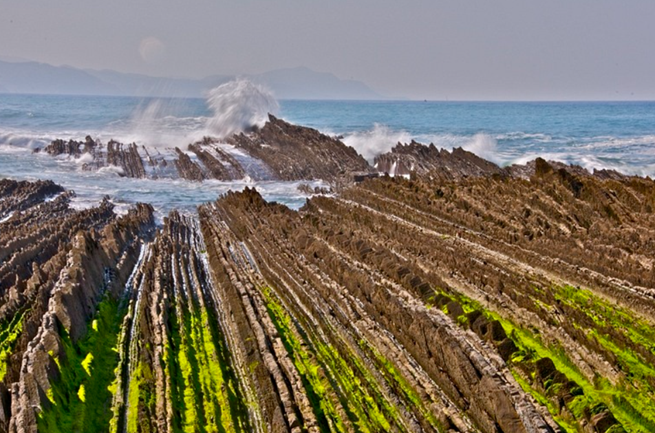
Turbidites
Turbidites are a type of sedimentary rock formed by the deposition of sediment-laden gravity flows known as turbidity currents. These currents occur underwater and result from the rapid downslope movement of sediment-rich water due to factors like earthquakes, submarine landslides, or sediment overloading. Turbidites typically consist of graded bedding, with coarser sediment at the base and finer sediment towards the top, reflecting the gradual settling of particles as the turbidity current dissipates.
Also, read- Beyond Earth-Unveiling the Mysteries of Lamayuru’s Moonland
Geological Significance
The study of flysch and turbidites of Nindam Formation contributes to our understanding of sedimentary processes, paleoenvironments, and tectonic evolution in the Himalayan region. By analyzing the characteristics and distribution of these sedimentary rocks, geologists can reconstruct ancient depositional environments and infer past tectonic events, helping to unravel the complex geological history of the Himalayas.
In summary, the flysch and turbidites of the Nindam Formation represent important geological features that provide valuable clues about the tectonic and sedimentary history of the Himalayan region, shedding light on the processes that have shaped this dynamic mountain range over geological time scales.
Nidar Ophiolite Complex
The Nidar Ophiolite Complex consists of sections of the oceanic crust and the underlying upper mantle that have been uplifted and exposed on land due to tectonic processes. The Nidar Ophiolite Complex is one of the largest and most well-exposed ophiolite sequences in the Indian subcontinent.
Formation and Composition
The Nidar Ophiolite Complex formed during the Mesozoic era, between approximately 250 to 66 million years ago. It consists of a sequence of rocks that were once part of an ancient oceanic crust. The typical sequence of rocks found in ophiolites includes peridotite (ultramafic rock), gabbro (mafic intrusive rock), sheeted dykes (vertical intrusions of basalt), and pillow lavas (basaltic lava flows).
Tectonic Significance
Ophiolites like the Nidar Complex are significant in understanding the process of seafloor spreading and the formation of oceanic crust. They are often considered fragments of ancient oceanic lithosphere that have been obducted (pushed up and onto land) during tectonic collisions between continental plates.
Geological Features
The Nidar Ophiolite Complex exhibits a range of geological features, including serpentinized peridotites, which are altered ultramafic rocks rich in the mineral serpentine. These rocks are often green in color and have a distinctive texture. The complex also contains gabbroic and basaltic rocks, providing insights into the magmatic and volcanic processes that occurred beneath the ancient oceanic crust.
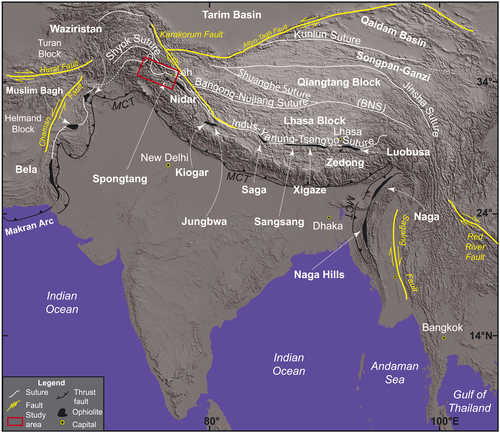
Tourism and Education
The Nidar Ophiolite Complex, with its unique geological features and scenic landscapes, also holds potential for tourism and educational purposes. Visitors interested in geology and earth sciences can explore the exposed rock formations and learn about the fascinating history of the Earth’s crust and tectonic activity.
How to reach Flysch and turbidites of Nindam Formation
The nearest airport to Leh, Ladakh, is Kushok Bakula Rimpochee Airport (Leh Airport). You can fly to Leh Airport from major cities in India such as Delhi, Mumbai, and Srinagar. From Leh, you will need to arrange ground transportation to reach the Nidar area.
By Road
Leh is connected to the rest of India by road via the Srinagar-Leh Highway and the Manali-Leh Highway. Both routes offer stunning views but are subject to weather conditions and seasonal closures due to snowfall. From Leh, you can hire a taxi or rent a car to travel to the Nidar area. The journey may take several hours depending on road conditions and the specific location within the Nidar area you wish to reach.
Trekking
Some parts of the Nidar area may only be accessible by trekking. If you’re an experienced trekker, you can consider embarking on a trekking expedition to explore the pristine landscapes and remote villages in the Nidar region. It’s essential to be well-prepared for high-altitude trekking and to obtain any necessary permits from local authorities.
